Kentucky Butter Cake
This post may contain affiliate links. Read my full disclosure policy.
This old-fashioned vanilla butter cake drenched in syrup is the 1963 winner of the Pillsbury Bake-Off Contest.
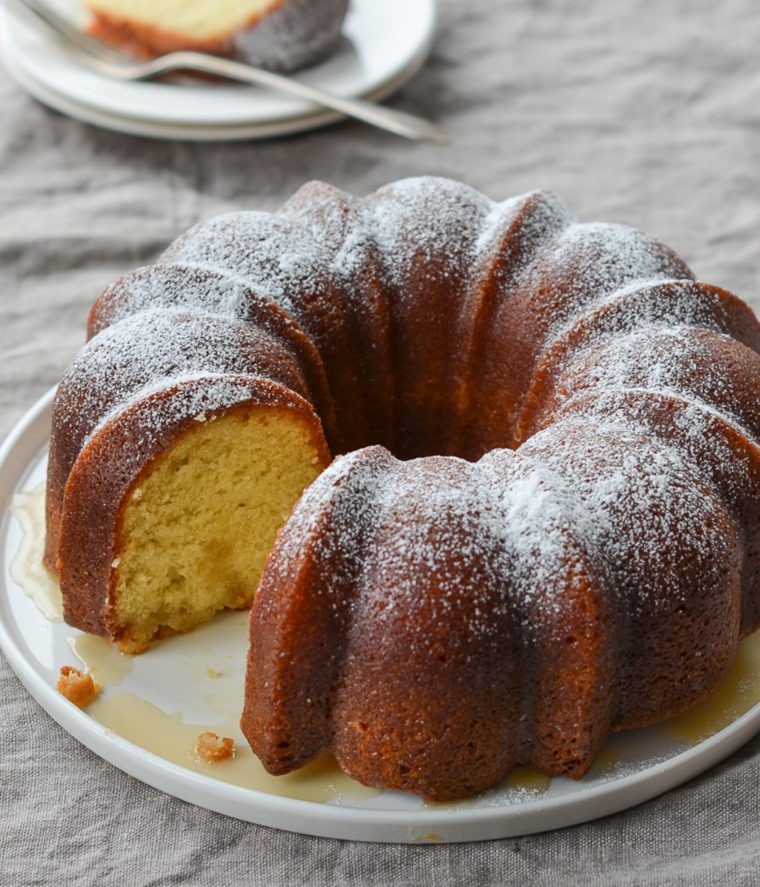
I have no clue why this delicious butter cake is named for the state of Kentucky, but the recipe has been around since at least 1963, when Nell Lewis of Platte City, Missouri entered it into the Pillsbury Bake-Off Contest and won. It’s an old-fashioned vanilla buttermilk pound cake drenched in a luscious butter and sugar syrup. The syrup not only adds exceptional moisture to the cake, but it also creates a crisp coating on the surface, almost like a glazed donut. Kids love it, grown-ups love it—this simple butter cake is hard to beat. A big thank you to my longtime reader, Karen Tannenbaum, for sharing the recipe with me.
What you’ll need To Make Kentucky Butter Cake
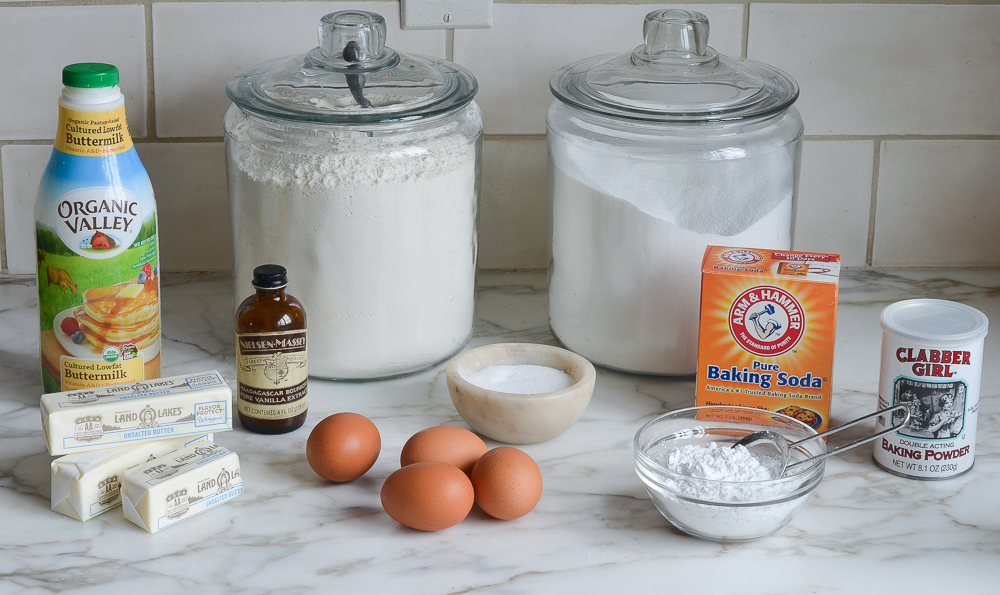
Before we get to the step-by-step instructions, a few words about the method. This butter cake is a “high-ratio” cake, which means that the weight of the sugar equals or exceeds the weight of the flour. Instead of the more common “creaming” method (where the butter and sugar are beaten together before the eggs, flour, and liquid are added), high-ratio cakes can be made using the “high-ratio” method, which involves mixing all the dry ingredients with the butter and some of the liquid first, then adding the remaining liquid ingredients.
The high-ratio method is not only easier than the traditional creaming method, but it also yields super tender and fine-textured cakes. (Other high-ratio cakes on the site include yellow cake, pound cake, rum cake, and marble cake.)
How to make kentucky butter cake
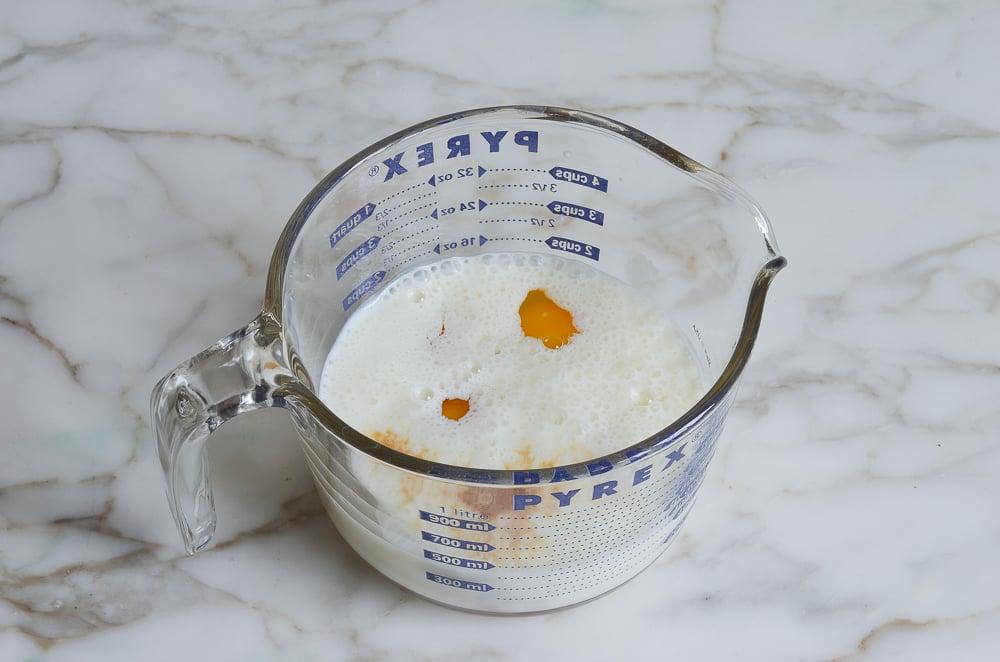 In a medium bowl or liquid measuring cup, combine the buttermilk, eggs, and vanilla.
In a medium bowl or liquid measuring cup, combine the buttermilk, eggs, and vanilla.
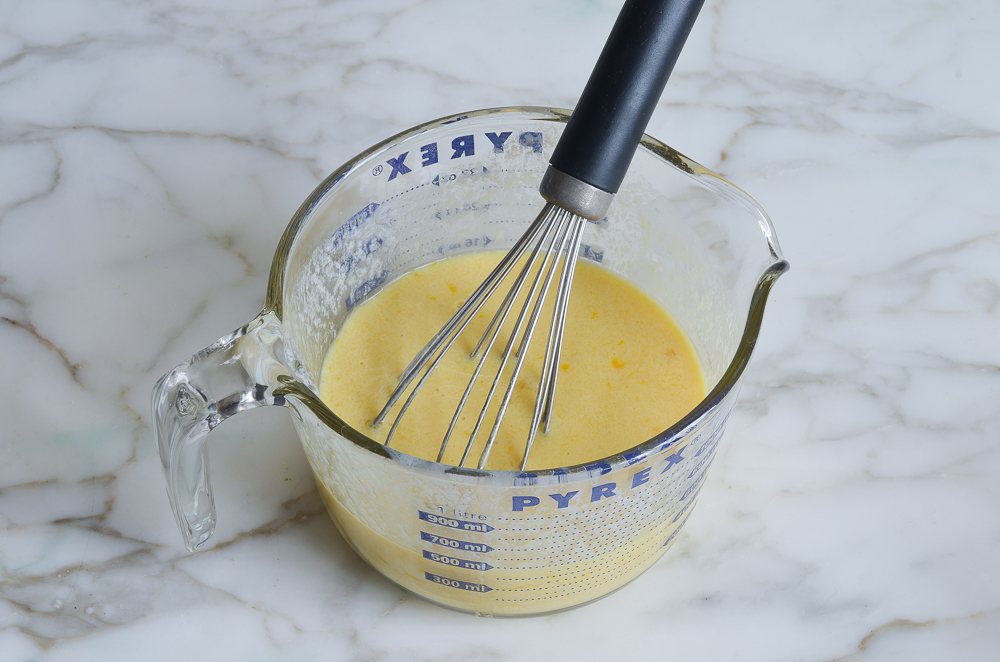
Whisk and set aside. (Note that the mixture will start to look curdled as it sits; that’s okay.)
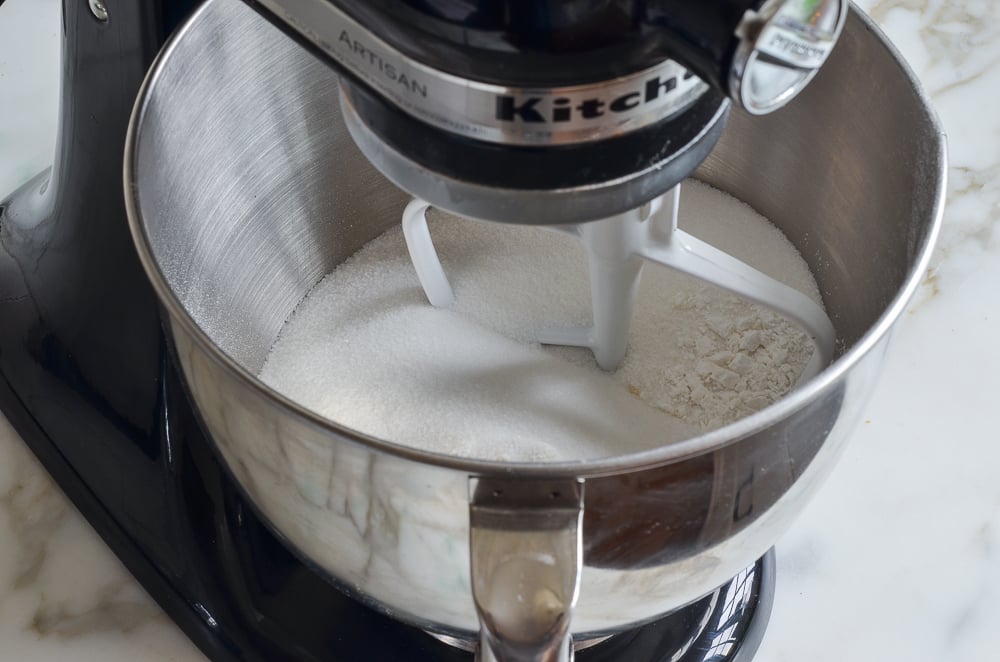
In the bowl of an electric mixer fitted with the paddle attachment or beaters, combine the flour, granulated sugar, baking powder, baking soda, and salt. Beat on low speed for 30 seconds to combine.
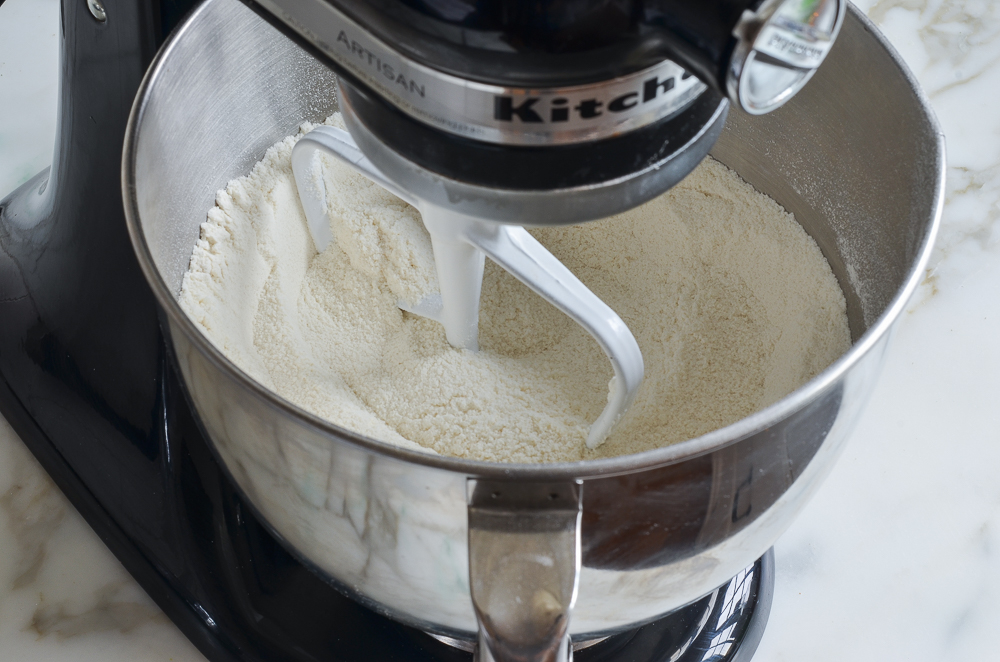
Add the soft butter and half of the buttermilk mixture. 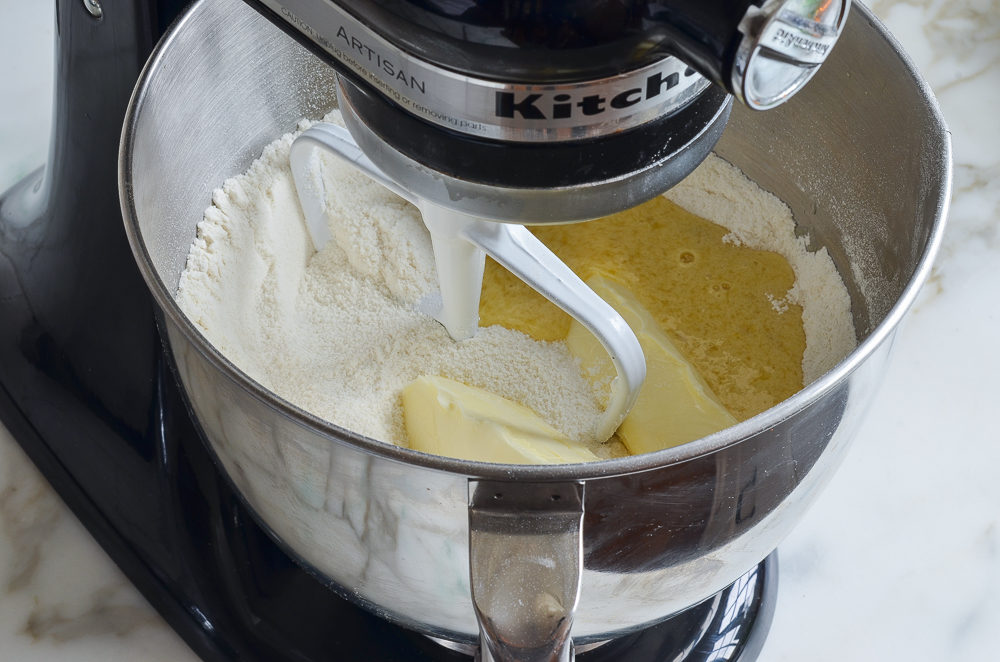
Mix on low speed until moistened but still a little crumbly, about 1 minute.
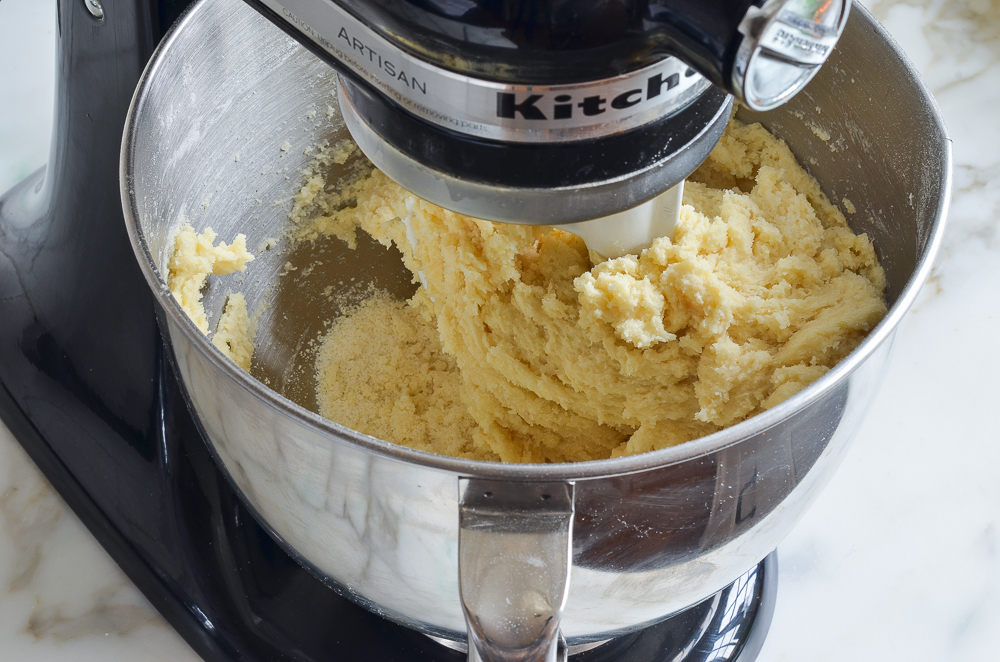
With the mixer running on low, gradually add the remaining buttermilk mixture.
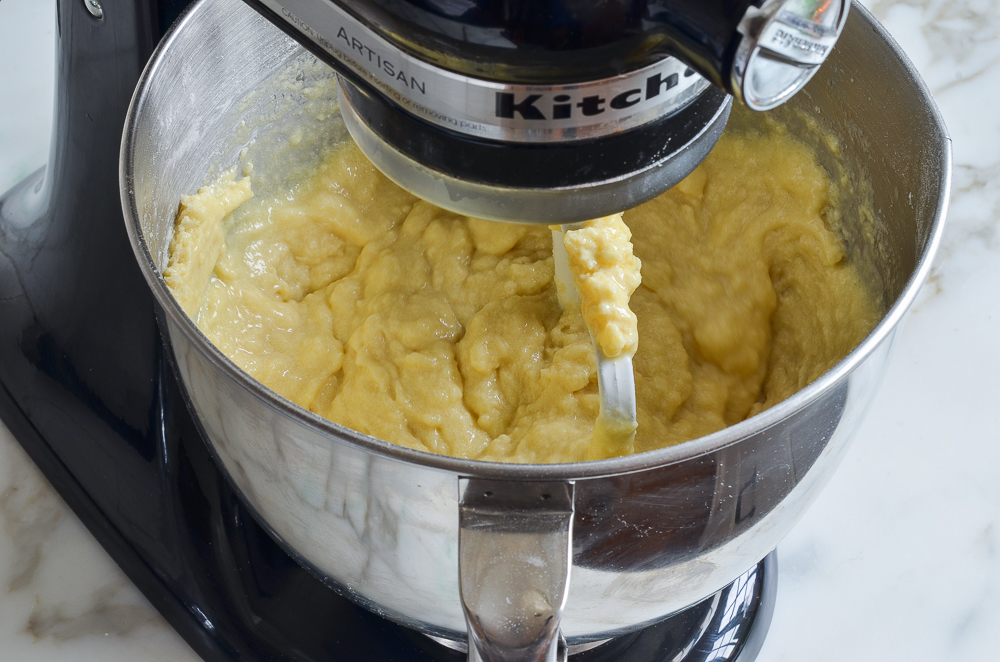
Increase the speed to medium and mix for three minutes, stopping once to scrape down the sides and bottom of the bowl with a rubber spatula. The batter should look pale and creamy.
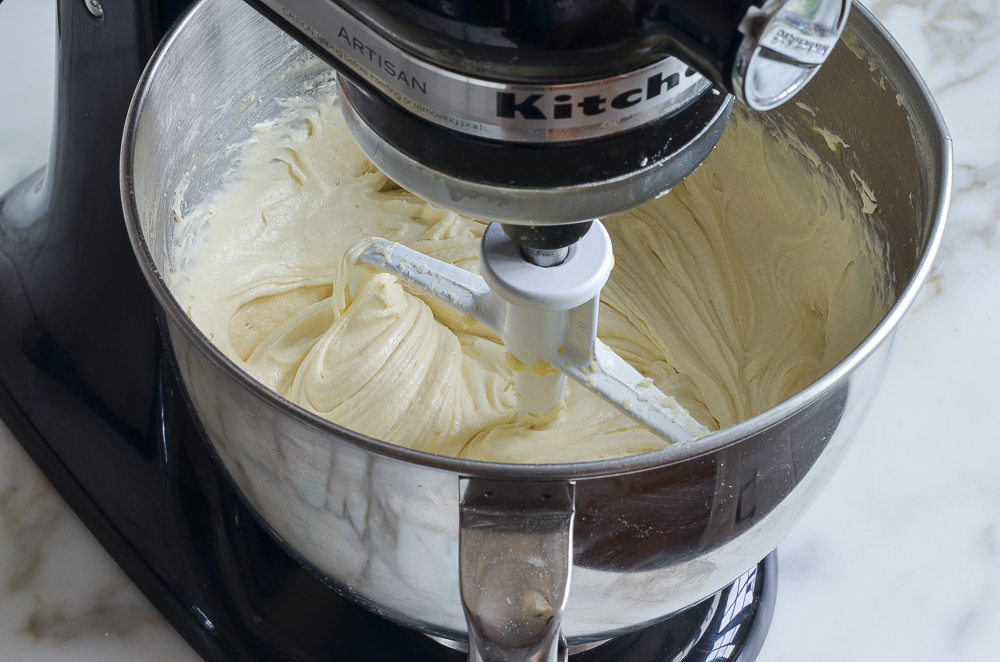
Transfer the batter to a Bundt pan sprayed with Baker’s Joy or Pam with Flour.
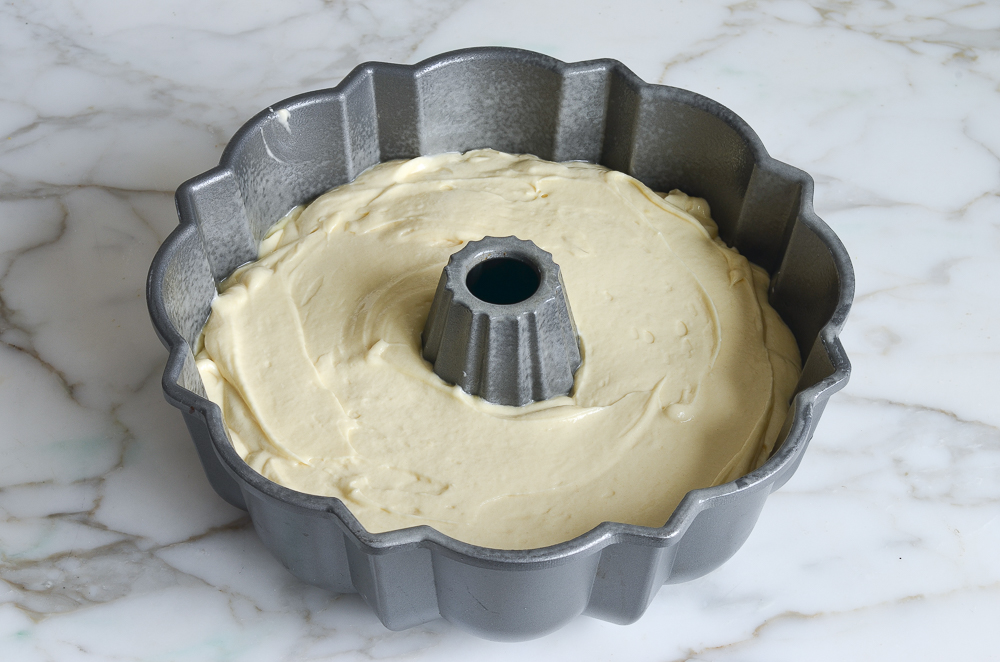
Bake for 1 hour, or until a cake tester comes out clean. Set the pan on a cooling rack.
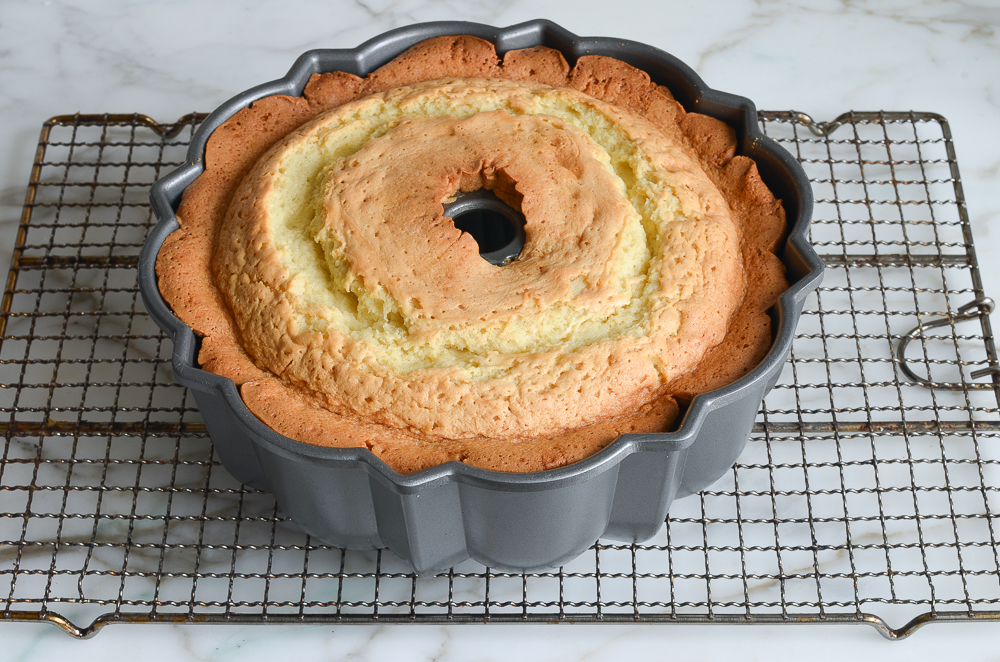
How to make the glaze
While the cake cools, make the glaze. In a small saucepan, combine the butter, granulated sugar, water, and vanilla.
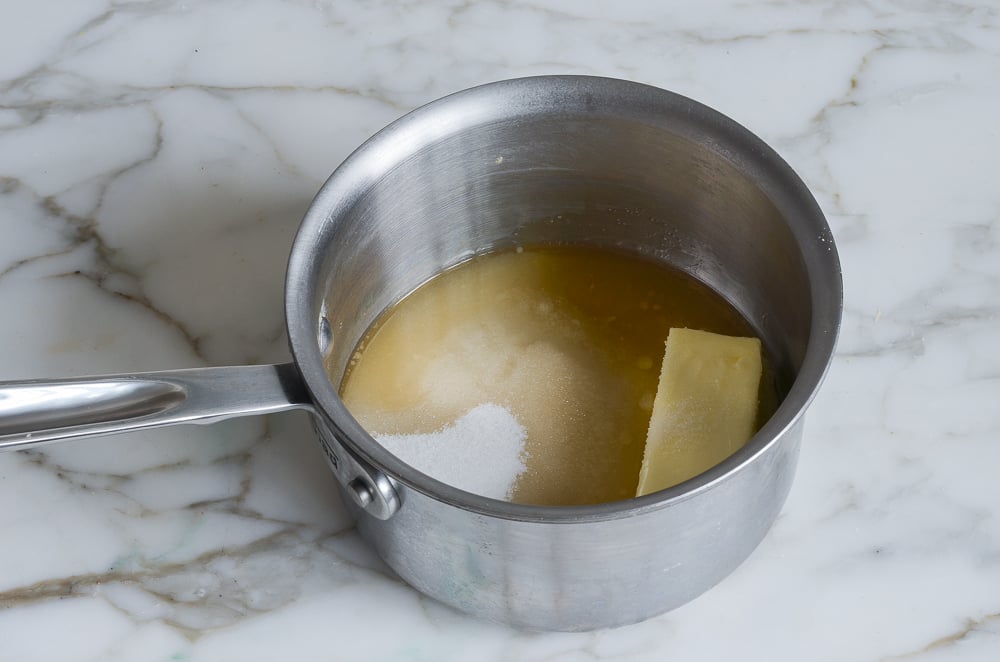
Bring to a boil, then reduce the heat and simmer until the sugar is dissolved, about 1 minute.
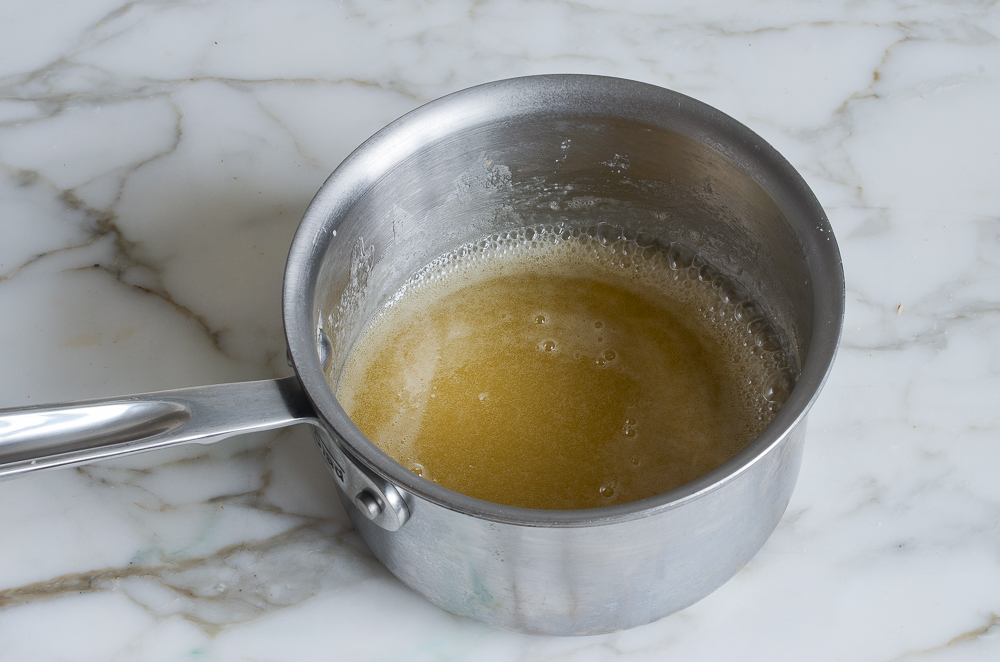
Using a skewer or toothpick, poke about 40 holes in the bottom of the still-warm cake, going about 3/4 of the way down.
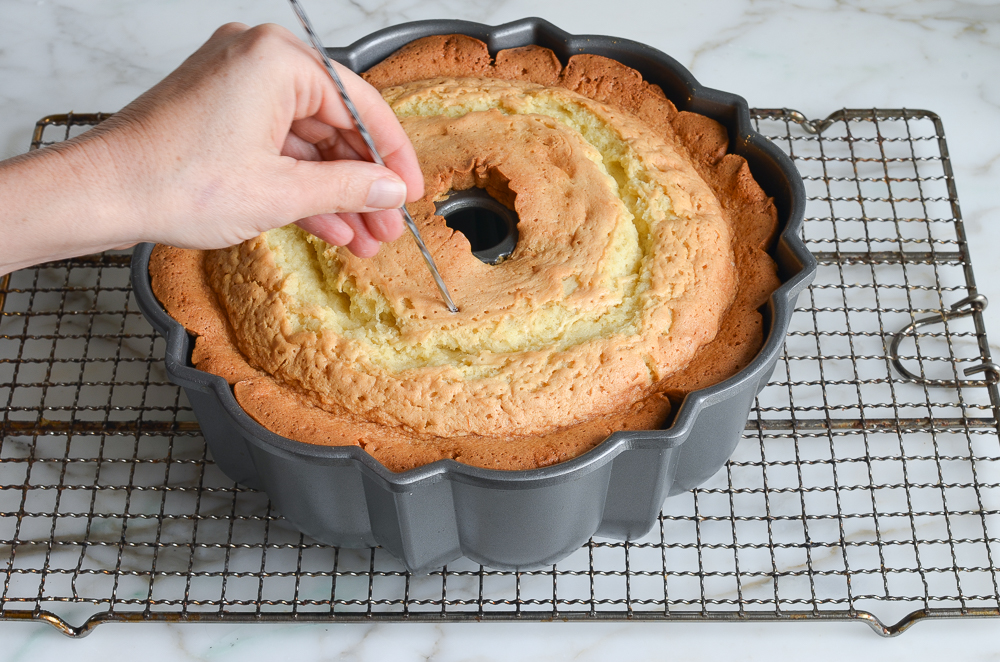
Spoon half of the glaze evenly over the bottom of the cake. 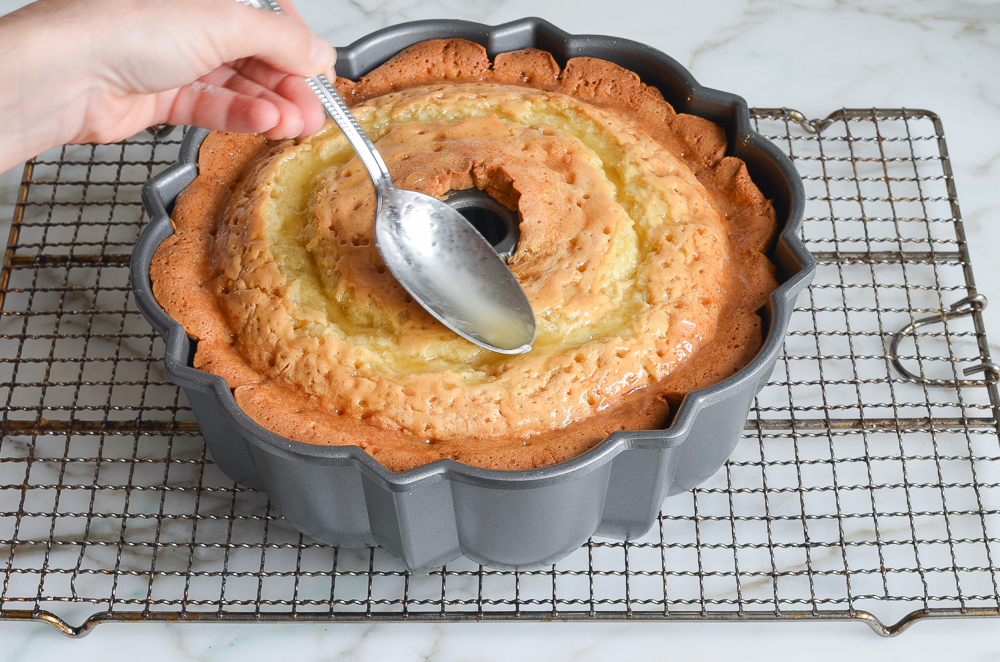
If the glaze starts to pool on the surface, poke more holes to help it sink in. Leave the cake on the rack to cool for 30 minutes.
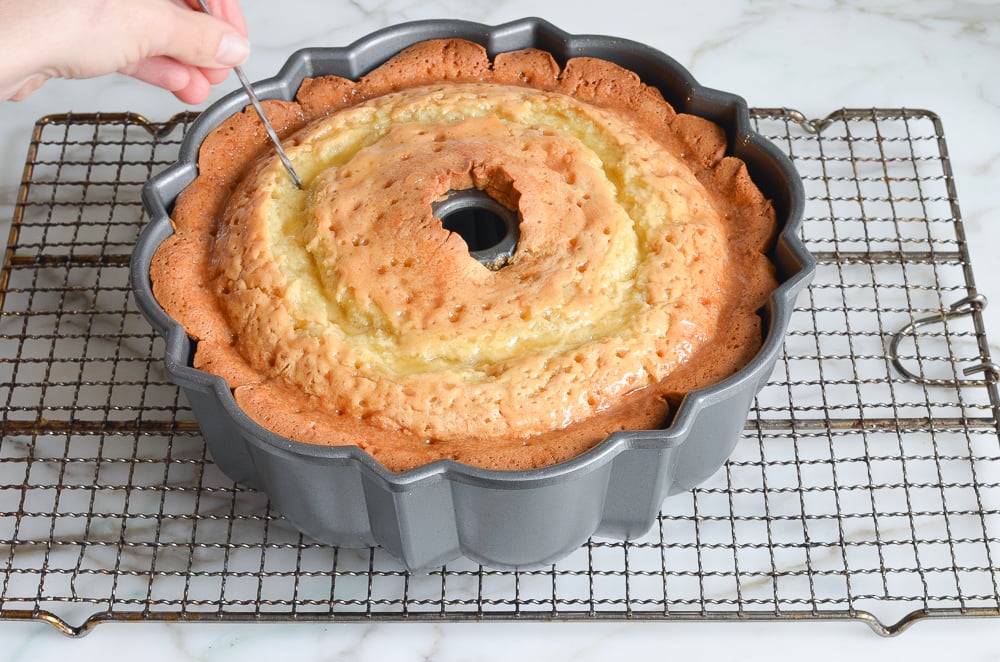
Invert the cake onto a serving platter.
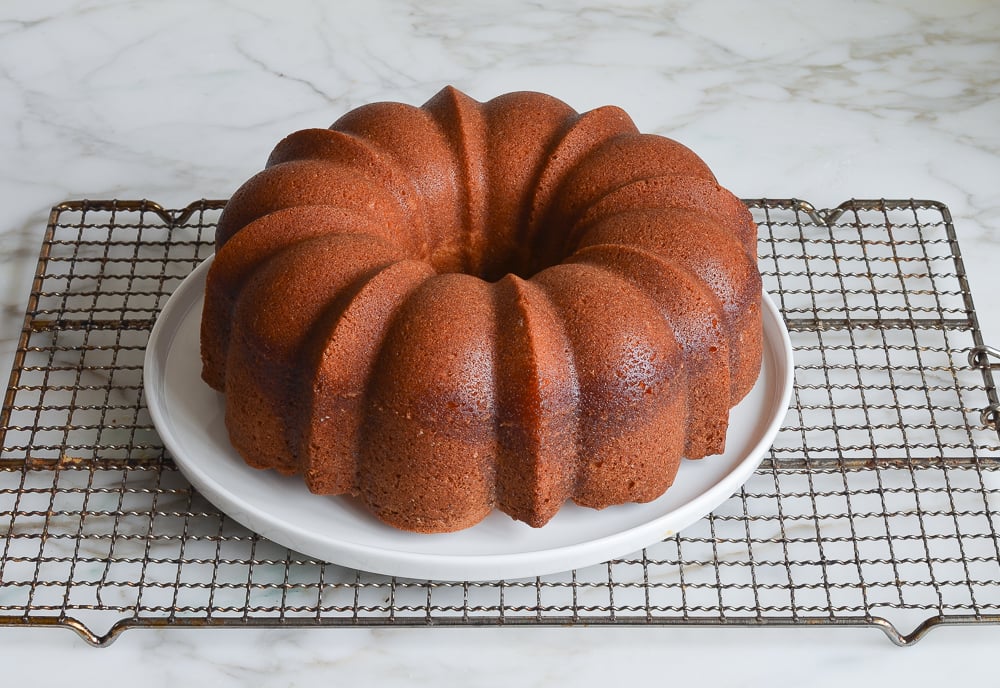
Brush the remaining glaze evenly over the top and sides of the cake, letting it soak in as you go. (Go slowly so that the cake absorbs the glaze.)
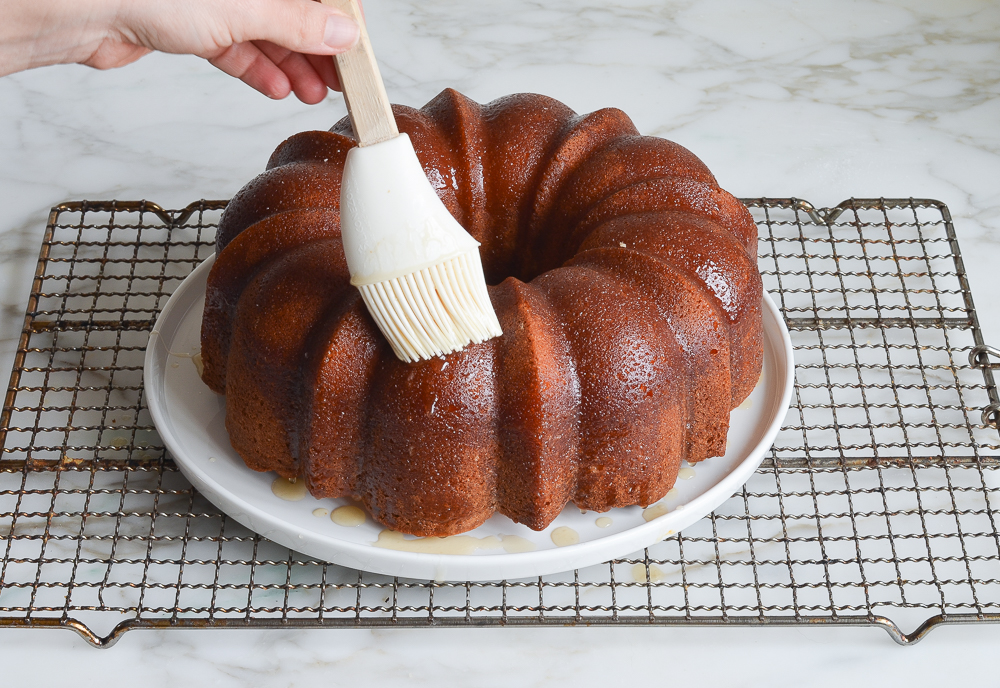
Let the cake sit for at least one hour before serving. Right before serving, use a fine sieve to dust the top of the cake with confectioners’ sugar.

You may also like
- Lemon Pound Cake
- Marble Cake
- Sour Cream Chocolate Chip Coffee Cake
- Rum Cake
- Sour Cream Coffe Cake with Cinnamon-Walnut Swirl
- Chocolate Bundt Cake
Kentucky Butter Cake
This old-fashioned vanilla butter cake drenched in syrup is the 1963 winner of the Pillsbury Bake-Off Contest.
Ingredients
For the Cake
- 1 cup buttermilk (see note)
- 4 large eggs
- 2 teaspoons vanilla extract
- 3 cups all-purpose flour, spooned into measuring cup and leveled-off
- 2 cups granulated sugar
- 1 teaspoon baking powder
- ½ teaspoon baking soda
- 1 teaspoon salt
- 1 cup (2 sticks) unsalted butter, softened
- Confectioners' sugar, for dusting
For the Glaze
- 5 tablespoons unsalted butter
- ¾ cup granulated sugar
- ¼ cup water
- 2 teaspoons vanilla extract
Instructions
For the Cake
- Preheat the oven to 325°F and set an oven rack in the middle position. Spray a 12-cup Bundt pan with nonstick cooking spray with flour, such as Baker's Joy or Pam with Flour.
- In a medium bowl, whisk together the buttermilk, eggs, and vanilla. Set aside. (Note that the mixture will start to look curdled as it sits; that's okay.)
- In the bowl of an electric mixer fitted with the paddle attachment or beaters, combine the flour, granulated sugar, baking powder, baking soda, and salt. Beat on low speed for 30 seconds to combine. Add the soft butter and half of the buttermilk mixture and mix on low speed until moistened but still a little crumbly, about 1 minute. With the mixer running on low, gradually add the remaining buttermilk mixture, then increase the speed to medium and mix for three minutes, stopping once to scrape down the sides and bottom of the bowl with a rubber spatula. The batter should look pale and creamy. Scrape down the sides and bottom of the bowl again, making sure the batter is evenly mixed.
- Transfer the batter to the prepared pan and bake for 1 hour, or until a cake tester comes out clean. Set the pan on a cooling rack. Using a skewer or toothpick, poke about 40 holes in the bottom of the still-warm cake, going about ¾ of the way down. Spoon half of the glaze evenly over the bottom of the cake. If the glaze starts to pool on the surface, poke more holes to help it sink in. Leave the cake on the rack to cool for 30 minutes.
- Invert the cake onto a serving platter. Brush or spoon the remaining glaze evenly over the top and sides of the cake, letting it soak in as you go. (Go slowly so that the glaze gets absorbed.) Let the cake sit for at least one hour before serving. Right before serving, use a fine sieve to dust the top of the cake with confectioners' sugar.
For the Glaze
- In a small saucepan, combine the butter, granulated sugar, water, and vanilla. Bring to a boil, then reduce the heat and simmer until the sugar is dissolved, about 1 minute.
- Note: If you’d like to make your own buttermilk, check out the easy method here.
- Make-Ahead Instructions: This cake keeps well for several days. Once cool, store in a cake dome (or cover with plastic wrap) at room temperature until ready to serve.
- Freezer-Friendly Instructions: The cake can be frozen for up to 3 months. After it is completely cooled, double-wrap it securely with aluminum foil or plastic freezer wrap, or place it in heavy-duty freezer bag. Thaw overnight on the countertop before serving.
Nutrition Information
Powered by ![]()
- Per serving (16 servings)
- Calories: 379
- Fat: 17 g
- Saturated fat: 10 g
- Carbohydrates: 53 g
- Sugar: 35 g
- Fiber: 1 g
- Protein: 5 g
- Sodium: 87 mg
- Cholesterol: 254 mg
This website is written and produced for informational purposes only. I am not a certified nutritionist and the nutritional data on this site has not been evaluated or approved by a nutritionist or the Food and Drug Administration. Nutritional information is offered as a courtesy and should not be construed as a guarantee. The data is calculated through an online nutritional calculator, Edamam.com. Although I do my best to provide accurate nutritional information, these figures should be considered estimates only. Varying factors such as product types or brands purchased, natural fluctuations in fresh produce, and the way ingredients are processed change the effective nutritional information in any given recipe. Furthermore, different online calculators provide different results depending on their own nutrition fact sources and algorithms. To obtain the most accurate nutritional information in a given recipe, you should calculate the nutritional information with the actual ingredients used in your recipe, using your preferred nutrition calculator.

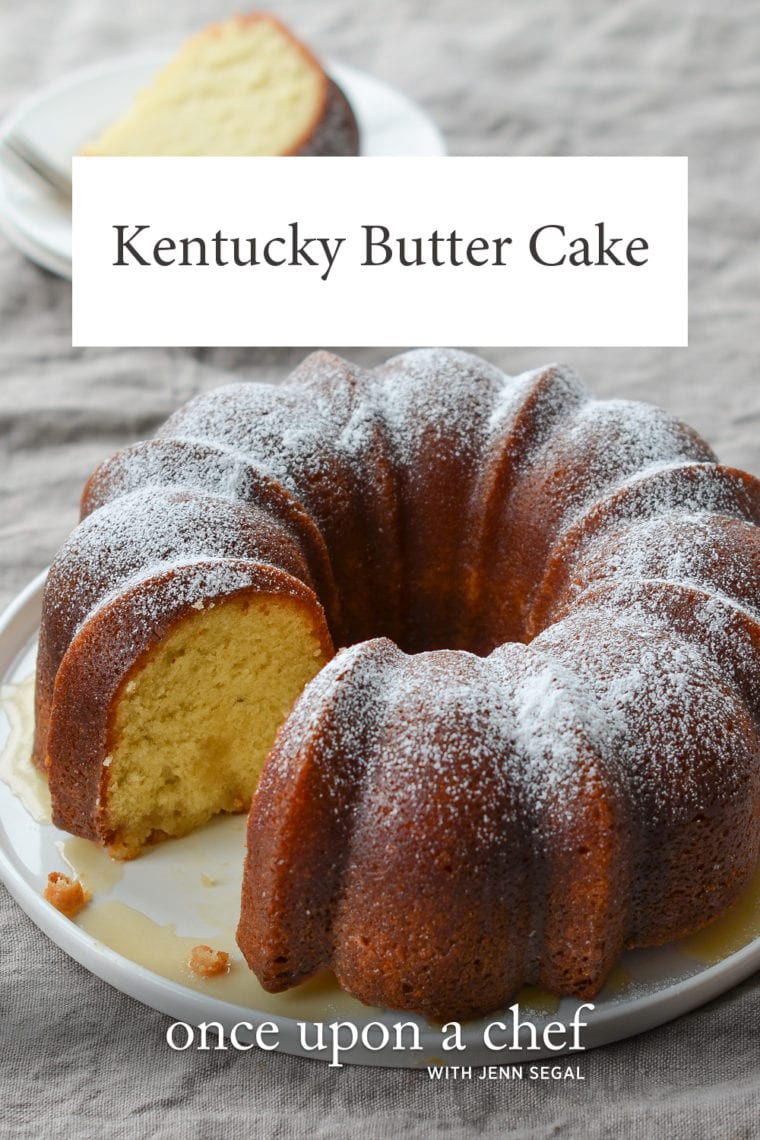
Hi, this recipe looks wonderful, but I was wondering if it uses a 10 cup or 12 cup bundt pan.
Hi Lina, A 12-cup pan works best for this. Hope you enjoy!
My oh my!
I’m not a dessert person at all, but after reading the recipe I thought I’d give it a try. The butter may have had something to do with it!
I always read the reviews, but I like to review AFTER it’s been made.
It was simple to make, it looked great and tasted incredibly light and soft.
Didn’t think my young grandson would care for it since there was no icing, but he and the neighbor kids asked for thirds!
I’ll make this again! Even I had 2 pieces!
Thanks for this beautiful Butter Cake!
Jeanette
Canada
This recipe jogged my memory, so I went through to my recipe box and sure enough there it was. Made it often about thirty years ago and then it sort of slipped away. I remember that it was a big, satisfying, wonderful cake. The only difference was in the way it was put together, in the traditional way, creaming butter and sugar, adding eggs, etc. The glaze did have 2 tbsp of rum and it was all brushed over the bottom of the cake and cooled completely in the pan, then dusted with confectioners sugar
Hi Jen. Love all of your recipes!! Can I add chocolate chips to this cake? I’m looking for a great chocolate chip pound cake. Thanks!–Lisa
Sure, Lisa, I think that would work. You could also try this recipe.
Hi there Jenn
Once again your recipes do not disappoint- I never made a cake from scratch- who knew it was so easy??? Made this for our 2nd annual Kentucky Derby gathering- this cake is delectable!
One of my guest wanted to know if it has to be made in a bunt?
Thank you
Diane
So glad you enjoyed it, Diane. It doesn’t need to be made in a Bundt; I think two 8.5 x 4.5-in loaf pans would work.
Made a similar cake with glaze in a Nordic House pan for Christmas and dusted it with icing sugar for a snow effect. It was delicious and the kiddies fought over the chimney – grin.
I have another Nordic bundt pan with several small houses (very large muffin?) Do you think it would adapt to that?
I do think that would work, Andrea. Please lmk how it turns out if you try it. 🙂
can you omit salt and use salted butter instead?
Hi Irene, While it varies by brand, most salted butter has approximately 1/4 tsp. salt per stick, so you can use the salted butter and reduce the salt in the recipe as needed. Hope that helps!
Can this be made in two loaf pans instead of a bundt pan? Thanks
Sure, Elly – I think that will work. 🙂
Oh my goodness, no calories there then! Looks absolutely delicious – must entice some visitors over so that I have an excuse to make one.
I’m on my way!
This cake recipe looks so delicious. Thank you for sharing it. Do you think it would also work to add some cocoa to the butter/sugar glaze mixture to give it a dark chocolate glazed donut effect?
Hi K, While that sounds yummy, unfortunately, I don’t think it will work here — sorry!
Looks yummy. I wonder if the original version called for Bourbon hence the Kentucky in the name.
I thought the same. A little bourbon in the glaze might be nice, especially since I think it would enhance the vanilla flavoring.
That cake sounds so good. I bet a little rhum wouldnt hurt either.